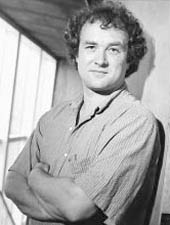Turner, B. C., Tonks, N. K., Rapp, U. R., Reed, J. C. (June 1993) Interleukin-2 Regulates Raf-1 Kinase-Activity through a Tyrosine Phosphorylation-Dependent Mechanism in a T-Cell Line. Proceedings of the National Academy of Sciences of the United States of America, 90 (12). pp. 5544-5548. ISSN 0027-8424
Preview |
PDF
Tonks_PNAS_1993Interleukin.pdf - Published Version Download (1MB) | Preview |
Abstract
Previously we found that interleukin 2 (IL-2) induces tyrosine phosphorylation and activation of the serine/threonine-specific kinase encoded by the raf-1 protooncogene in a T-cell line, CTLL-2. Here we extended these findings by exploring the effects of selective removal of phosphate from tyrosines in p72-74-Raf-1 kinase that had been immunoprecipitated from IL-2-stimulated CTLL-2 cells. Treatment in vitro of IL-2-activated Raf-1 with the tyrosine-specific phosphatases CD45 and TCPTP (formerly called T-cell protein tyrosine phosphatase) reduced Raf kinase activity to nearly baseline levels. This effect was completely inhibited by the phosphatase inhibitor sodium orthovanadate. In contrast, treatment of Raf-1 with a serine/threonine-specific phosphatase, protein phosphatase 1 (PP-1), resulted in a more modest decrease in Raf in vitro kinase activity, and this effect was prevented by okadaic acid. Two-dimensional phosphoamino acid analysis confirmed the selective removal of phosphate from tyrosine by CD45 and from serine and threonine by PP-1. The immunoreactivity of p72-74-Raf-1 with anti-phosphotyrosine antibodies was also completely abolished by treatment with CD45 in the absence but not in the presence of sodium orthovanadate. These findings provide evidence that the IL-2-stimulated phosphorylation of Raf-1 on tyrosines plays an important role in upregulating the activity of this serine/threonine-specific kinase in CTLL-2 cells and, as such, provides a model system for studying the transfer of growth factor-initiated signals from protein tyrosine kinases to serine/threonine-specific kinases.
| Item Type: | Paper |
|---|---|
| Uncontrolled Keywords: | T-LYMPHOCYTE T-lymphocyte SIGNAL TRANSDUCTION signal transduction PHOSPHATASE phosphatase COLONY-STIMULATING FACTOR colony stimulating factor PROTEIN-KINASE protein kinase RAPID PHOSPHORYLATION rapid phosphorylation SIGNAL TRANSDUCTION signal transduction RECEPTOR-BETA receptor beta receptor-beta GROWTH-FACTOR growth factor KILLER-CELLS killer cells C-RAF ACTIVATION activation INCREASE increase |
| Subjects: | bioinformatics > genomics and proteomics > genetics & nucleic acid processing > DNA, RNA structure, function, modification > genes, structure and function > gene expression bioinformatics > genomics and proteomics > genetics & nucleic acid processing > protein structure, function, modification > protein types > enzymes > kinase > tyrosine kinase |
| CSHL Authors: | |
| Communities: | CSHL labs > Tonks lab |
| Depositing User: | CSHL Librarian |
| Date: | June 1993 |
| Date Deposited: | 11 Apr 2012 14:36 |
| Last Modified: | 13 Sep 2019 16:56 |
| PMCID: | PMC46757 |
| Related URLs: | |
| URI: | https://repository.cshl.edu/id/eprint/26142 |
Actions (login required)
 |
Administrator's edit/view item |
